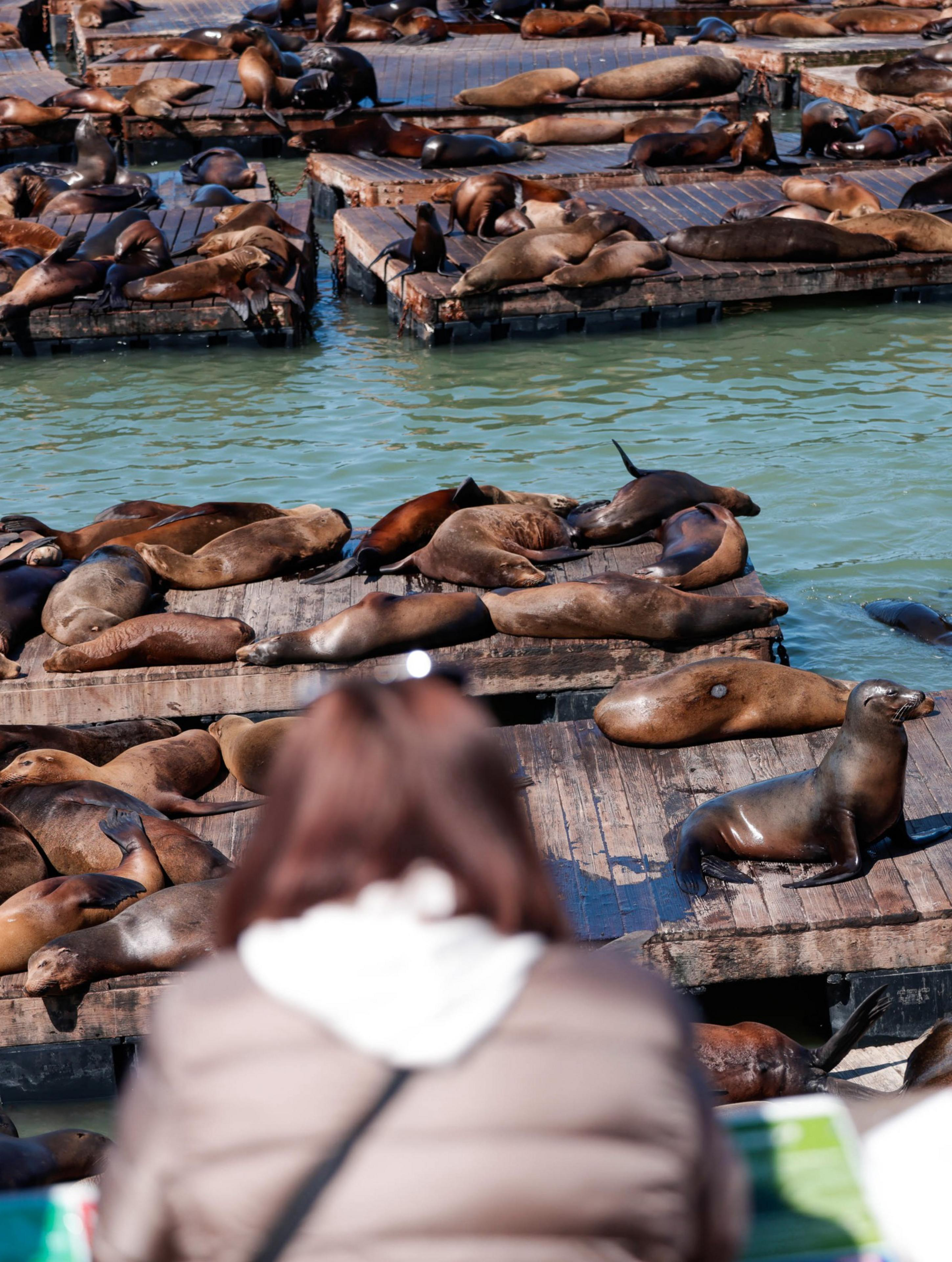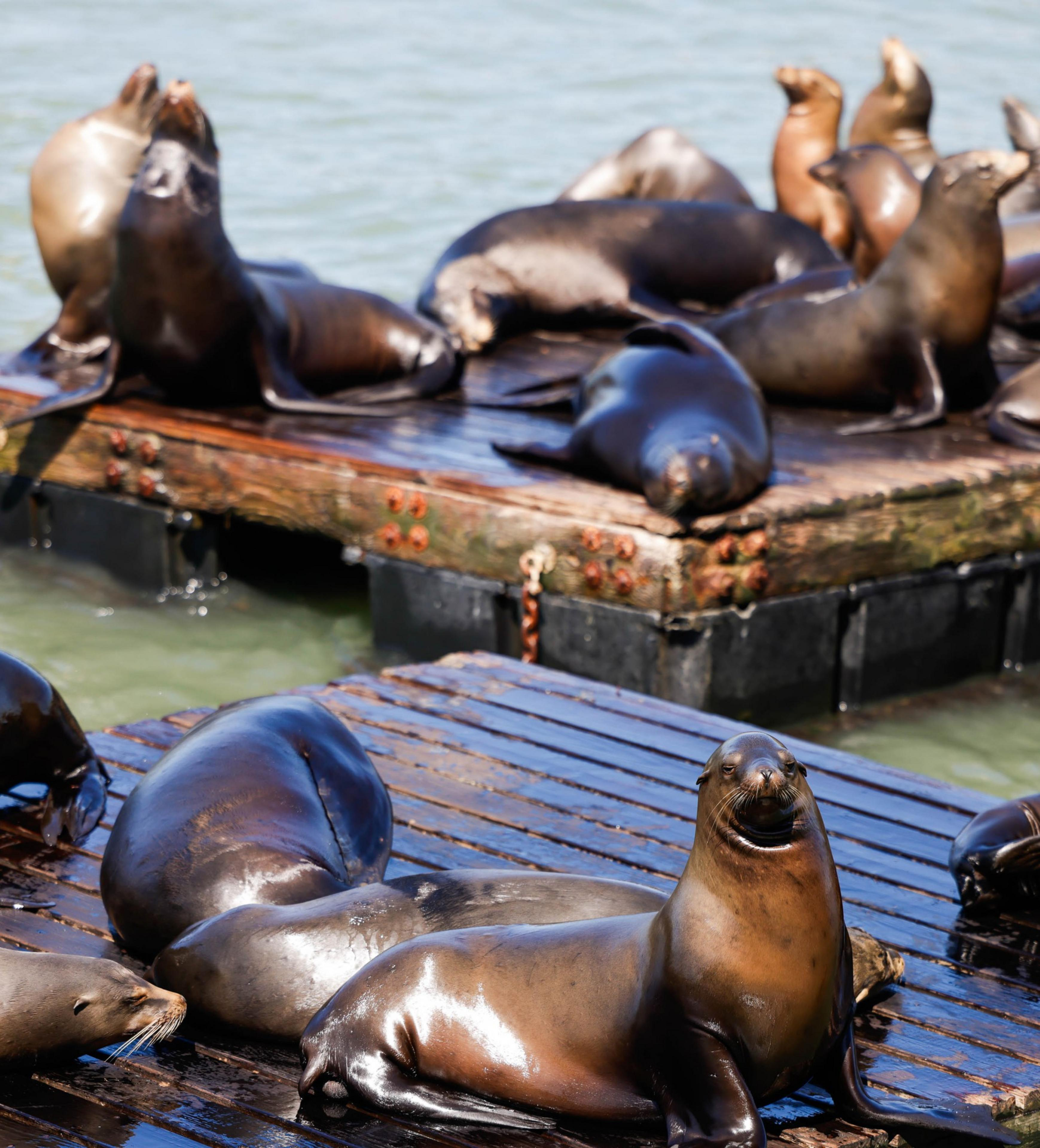Like a lot of San Franciscans, the sea lions of Pier 39 came here from someplace else.
They first showed up nearly 35 years ago, in the dark days after the October 1989 Loma Prieta earthquake leveled parts of the city, along with the tourism industry. No one knew why, but a lone burly male appeared one day on the pier’s K-Dock. The staff named him Flea Collar because of the bit of fishing line that was draped around his blubbery neck, remembered Sheila Chandor, Pier 39’s longtime harbor master. Soon, other sea lions joined him on the dock, becoming an instant and beloved spectacle (opens in new tab) at a moment when the city badly needed one.


“They just started to multiply, and they really and truly saved us,” Chandor said. “We were dead. No one was coming to the city.”
Since then, the Pier 39 sea lion colony has waxed and waned with the seasons and the years, hitting a former all-time high of 1,701 back in November 2009. Mysteriously, they suddenly disappeared altogether (opens in new tab) a few weeks later. “The animals began leaving in droves the day after Thanksgiving, as if someone had issued an order,” reported the Associated Press.
As of Thursday, May 30, the sea lion population is the biggest it’s been in seven years (opens in new tab), according to Chandor, who said her staff had counted 2,000 of the 800-pound pinnipeds sunbathing on the dock (opens in new tab), like a brown, flippered carpet.
An extra large school of tiny fish may be heading into San Francisco Bay from the Farallon Islands at the moment, according to local fisherman. That makes it an ideal locale for the nearly all-male herd of sea lions to hang out and fatten up in preparation for the trip south to their mating grounds in Southern California’s Channel Islands, where they’ll vie for territory—and females—during the summer months.


They’re like wrestlers undergoing a training regimen—if one that requires an inordinate amount of napping.
“There’s a lot of antics trying to get a space on K-Dock,” Chandor said. “Some will swim in late in the day, and everybody’s already settled and starting to snooze. Then you’ll see attempts to jump on top of each other, followed by a lot of irritated barking.”
She added: “They’re smarter than dogs, if not more so.”

She added that the Pier 39 herd seems to recognize the cleaning crew that rides by in boats several times per week with industrial hoses to clean off the docks, a service Chandor describes as sea lion “room service.”
Experts confirm that sea lions are known for their playfulness and intelligence, and humans should should stay at least 150 feet away from them at all times.
Giancarlo Rulli of the Marine Mammal Center in Sausalito added that people who encounter hurt or sick sea lions or other marine mammals should never touch them or try to intervene, which can increase an animal’s stress level, transmit disease or cause mothers to reject their pups. Anyone who encounters an animal in distress can call the Marine Mammal Center’s hotline at 415-289-SEAL (7325).
The center documented some 200 marine mammal rescue cases in 2023, up significantly from the year before. “Folks see these animals as a gregarious species with big personalities, and they want to interact with them,” Rulli said. “But if an animal reacts to your presence, then you’re probably too close.”


The California sea lion is often cited as a conservation success story (opens in new tab). While hunting, pollutants and other forces had depleted sea lion numbers by the middle of the last century, they rebounded after the passage of the Marine Mammal Protection Act in 1972, rising from less than 90,000 animals in 1975 to an estimated 281,450 in 2008.
Not everyone is charmed by San Francisco’s local sea lions, who spend a lot of their time defecating, regurgitating, and making a lot of noise. Three-and-a-half decades after their arrival, some locals, like Chandor, adore them. Others have never stopped grumbling that their barking can be heard in North Beach at all hours of the night.
But no one can say that they aren’t good for business. An estimated 15 million people visit Pier 39 each year, according to its website, many of them drawn by the sea lions.
“It worked out for us,” said Chandor.
Update: This story was updated on May 30 with new information that the sea lion population had reached record highs.
